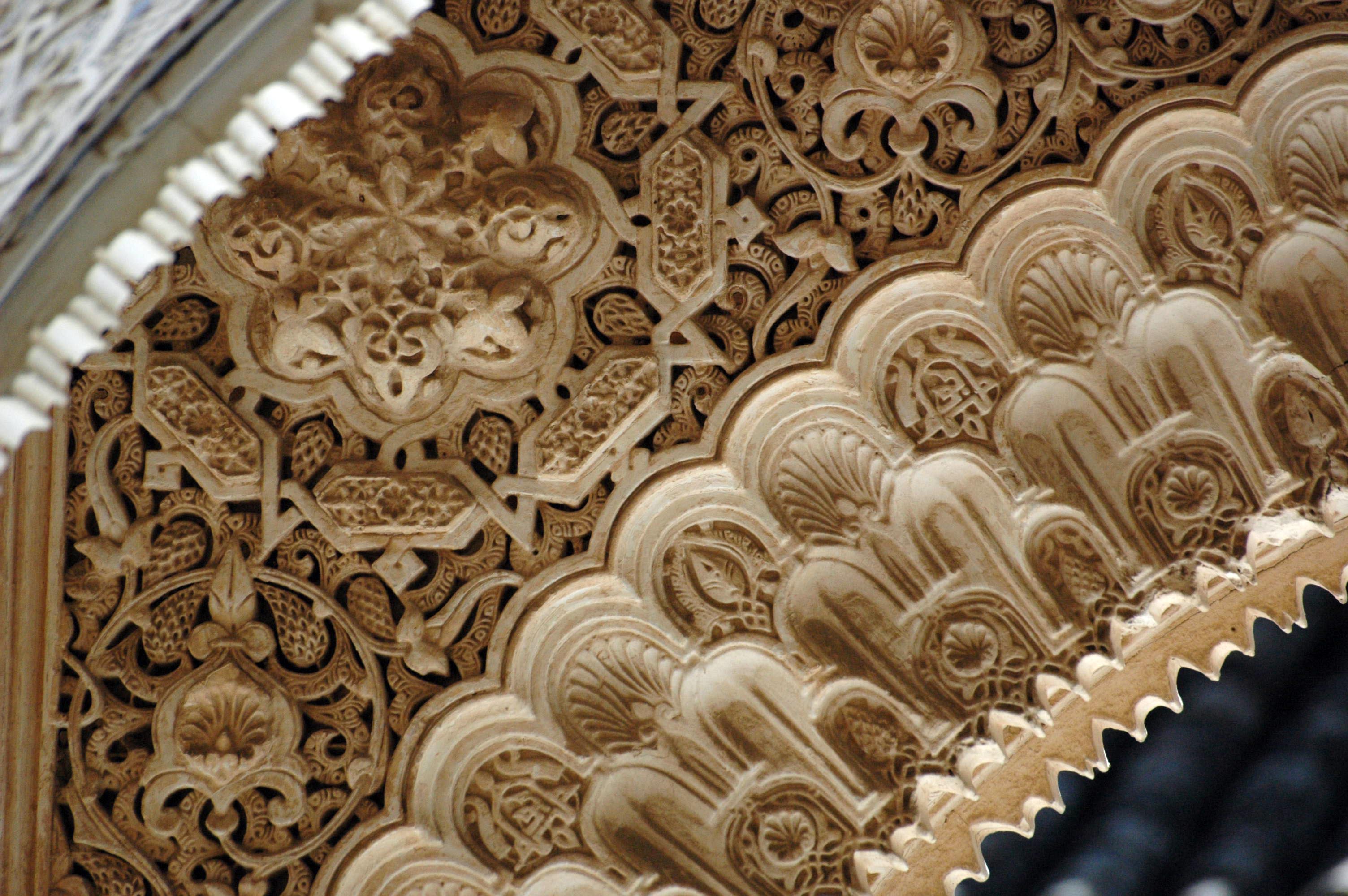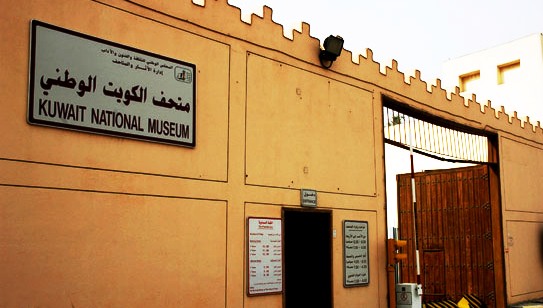|
Dar Al Athar Al Islamiyyah
Dar al Athar al Islamiyyah is a cultural organization operating several cultural centers in Kuwait. The organization has a collection of more than 20,000 items of rare Islamic art. The collection belongs to Sheikh Nasser Sabah Al-Ahmed Al-Sabah and his wife Sheikha Hussa Sabah Al-Salem Al-Sabah, who personally oversees the Kuwait National Museum. Many items, especially those from the pre-Islamic period, are housed at Amricani Cultural Centre in Kuwait. The collection includes "books, manuscripts, ceramics, glass, metal, precious stones and jewelled objects, architectural ornaments, textiles and carpets, coins and scientific instruments." The Dar al Athar al Islamiyyah cultural centres include education wings, conservation labs, and research libraries. References External links * The Al-Sabah Collection [...More Info...] [...Related Items...] OR: [Wikipedia] [Google] [Baidu] |
Kuwait City
Kuwait City ( ar, مدينة الكويت) is the capital and largest city of Kuwait. Located at the heart of the country on the south shore of Kuwait Bay on the Persian Gulf, it is the political, cultural and economical centre of the emirate, containing Kuwait's Seif Palace, government offices, and the headquarters of most Kuwaiti corporations and banks. It is one of the hottest cities in summer on earth, with average summer high temperatures over 45 °C (113 °F) for three months of the year. As of 2018, the metropolitan area had roughly 3 million inhabitants (more than 70% of the country's population). The city itself has no administrative status. All six governorates of the country comprise parts of the urban agglomeration, which is subdived in numerous areas. In a more narrow sense, ''Kuwait City'' can also refer only to the town's historic core, which nowadays is part of the Capital Governorate and seamlessly merges with the adjacent urban areas. Kuwait City's ... [...More Info...] [...Related Items...] OR: [Wikipedia] [Google] [Baidu] |
Kuwait
Kuwait (; ar, الكويت ', or ), officially the State of Kuwait ( ar, دولة الكويت '), is a country in Western Asia. It is situated in the northern edge of Eastern Arabia at the tip of the Persian Gulf, bordering Iraq to the north and Saudi Arabia to the south. Kuwait also shares maritime borders with Iran. Kuwait has a coastal length of approximately . Most of the country's population reside in the urban agglomeration of the capital city Kuwait City. , Kuwait has a population of 4.45 million people of which 1.45 million are Kuwaiti citizens while the remaining 3.00 million are foreign nationals from over 100 countries. Historically, most of present-day Kuwait was part of ancient Mesopotamia. Pre-oil Kuwait was a strategic trade port between Mesopotamia, Persia and India. Oil reserves were discovered in commercial quantities in 1938. In 1946, crude oil was exported for the first time. From 1946 to 1982, the country underwent large-scale modernization, largely b ... [...More Info...] [...Related Items...] OR: [Wikipedia] [Google] [Baidu] |
Islamic Art
Islamic art is a part of Islamic culture and encompasses the visual arts produced since the 7th century CE by people who lived within territories inhabited or ruled by Muslim populations. Referring to characteristic traditions across a wide range of lands, periods, and genres, Islamic art is a concept used first by Western art historians since the late 19th century. Public Islamic art is traditionally non- representational, except for the widespread use of plant forms, usually in varieties of the spiralling arabesque. These are often combined with Islamic calligraphy, geometric patterns in styles that are typically found in a wide variety of media, from small objects in ceramic or metalwork to large decorative schemes in tiling on the outside and inside of large buildings, including mosques. Other forms of Islamic art include Islamic miniature painting, artefacts like Islamic glass or pottery, and textile arts, such as carpets and embroidery. The early developments of Isla ... [...More Info...] [...Related Items...] OR: [Wikipedia] [Google] [Baidu] |
Nasser Sabah Al-Ahmad Al-Sabah
Sheikh Nasser Sabah Al-Ahmad Al-Sabah ( ar, ناصر صباح الأحمد الصباح; 27 April 1948 – 20 December 2020) was the First Deputy Prime Minister, Minister of Defense of Kuwait, and before that he was the head of the Amiri Diwan in 2006–2017. Nasser was the eldest son (conceived shortly after 18th birthday) of the ruler or Emir of Kuwait, Sabah Al-Ahmad Al-Jaber Al-Sabah (1929–2020). He was seen as the main driving force behind " Silk City", one of Kuwait's mega projects with investments estimated at more than US$100 billion. Patron of Arts and Culture Sheikh Nasser established Dar al Athar al Islamiyyah, a Kuwaiti cultural foundation based around the Al-Sabah Antiques Group. Sheikh Nasser Sabah was an honorary member of the Board of Trustees of the Metropolitan Museum of Art in New York City. Membership of Committees and Associations * Head of the Committee for Common Development Enterprises between the State of Kuwait and the Islamic Republic of Iran - ... [...More Info...] [...Related Items...] OR: [Wikipedia] [Google] [Baidu] |
Kuwait National Museum
The Kuwait National Museum is the national museum of Kuwait, located in Kuwait City. It was established in 1983 and designed by architect Michel Ecochard. The museum comprises five buildings set around a central garden, their organization is parallel to the architectural plan of the vernacular Arab mud house with its central courtyard. The main buildings are connected to each other with elevated walkways. Ecochard explains that the grouping of those buildings corresponds to knowledge of the region, its geography, its history and its civilization. The museum has four main sections to it: 1. Kuwait Heritage Hall 2. Hall of Archeology 3. The Planetarium 4. Al Muhallab Dhow https://www.nccal.gov.kw/pages/monumentsandmuseums/بوم-المهلب See also * Kuwait National Cultural District * Fateh Al-Khayr The ''Fateh Al-Khayr'' is a 226-ton dhow preserved as a museum ship in Kuwait at Kuwait Scientific Center. Built in 1938 in Kuwait by Ali Abdul Rassol for Mohamed Al-Ghanim and ... [...More Info...] [...Related Items...] OR: [Wikipedia] [Google] [Baidu] |
Google Arts & Culture
Google Arts & Culture (formerly Google Art Project) is an online platform of high-resolution images and videos of artworks and cultural artifacts from partner cultural organizations throughout the world. It utilizes high-resolution image technology that enables the viewer to tour partner organization collections and galleries and explore the artworks' physical and contextual information. The platform includes advanced search capabilities and educational tools. A part of the images are used within Wikimedia and Wikipedia. Collections in Wikimedia The following list of collections is based on the Wikimedia category Google Art Project works by collection. The "Visit" link redirects to the museum's official page on the Google Arts & Culture platform. See alscollections in Google Arts & Culture The "Assigned works" link redirects to the images of the works shown in this collection available in Wikimedia. Painters in Wikimedia The following alphabetically ordered list of painters ... [...More Info...] [...Related Items...] OR: [Wikipedia] [Google] [Baidu] |
1980 Establishments In Kuwait
__NOTOC__ Year 198 (CXCVIII) was a common year starting on Sunday (link will display the full calendar) of the Julian calendar. At the time, it was known as the Year of the Consulship of Sergius and Gallus (or, less frequently, year 951 ''Ab urbe condita''). The denomination 198 for this year has been used since the early medieval period, when the Anno Domini calendar era became the prevalent method in Europe for naming years. Events By place Roman Empire *January 28 **Publius Septimius Geta, son of Septimius Severus, receives the title of Caesar. **Caracalla, son of Septimius Severus, is given the title of Augustus. China *Winter – Battle of Xiapi: The allied armies led by Cao Cao and Liu Bei defeat Lü Bu; afterward Cao Cao has him executed. By topic Religion * Marcus I succeeds Olympianus as Patriarch of Constantinople (until 211). Births * Lu Kai (or Jingfeng), Chinese official and general (d. 269) * Quan Cong, Chinese general and advisor (d. 24 ... [...More Info...] [...Related Items...] OR: [Wikipedia] [Google] [Baidu] |
Museums Established In 1980
A museum ( ; plural museums or, rarely, musea) is a building or institution that cares for and displays a collection of artifacts and other objects of artistic, cultural, historical, or scientific importance. Many public museums make these items available for public viewing through exhibits that may be permanent or temporary. The largest museums are located in major cities throughout the world, while thousands of local museums exist in smaller cities, towns, and rural areas. Museums have varying aims, ranging from the conservation and documentation of their collection, serving researchers and specialists, to catering to the general public. The goal of serving researchers is not only scientific, but intended to serve the general public. There are many types of museums, including art museums, natural history museums, science museums, war museums, and children's museums. According to the International Council of Museums (ICOM), there are more than 55,000 museums in 202 countries ... [...More Info...] [...Related Items...] OR: [Wikipedia] [Google] [Baidu] |
Buildings And Structures In Kuwait City
A building, or edifice, is an enclosed structure with a roof and walls standing more or less permanently in one place, such as a house or factory (although there's also portable buildings). Buildings come in a variety of sizes, shapes, and functions, and have been adapted throughout history for a wide number of factors, from building materials available, to weather conditions, land prices, ground conditions, specific uses, prestige, and aesthetic reasons. To better understand the term ''building'' compare the list of nonbuilding structures. Buildings serve several societal needs – primarily as shelter from weather, security, living space, privacy, to store belongings, and to comfortably live and work. A building as a shelter represents a physical division of the human habitat (a place of comfort and safety) and the ''outside'' (a place that at times may be harsh and harmful). Ever since the first cave paintings, buildings have also become objects or canvasses of much artistic ... [...More Info...] [...Related Items...] OR: [Wikipedia] [Google] [Baidu] |
Museums In Kuwait
This is a list of museums in Kuwait: * Kuwait National Cultural District ** Sheikh Abdullah Al Salem Cultural Centre ** Al Salam Palace ** Habitat Museum at Al Shaheed Park ** Remembrance Museum at Al Shaheed Park * Bait Al-Othman Museum * Ahmad Al-Jaber Oil and Gas Museum * Qibla Cultural District ** Sadu House ** National Museum of Kuwait ** Bait al-Bader * Museum of Modern Art * Kuwait Maritime Museum * Tareq Rajab Museum * Tareq Rajab Museum of Islamic Calligraphy (Dar Jehan) * Al Qurain Martyr's Museum * Historical, Vintage, and Classical Cars Museum * Amricani Cultural Centre * Dickson House * Yarmouk Cultural Centre * House of Mirrors * Failaka Museum * Jahra Red Palace Museum * Municipal Museum * History of Education Museum (Mubarakiya School) * Kuwait Scientific Center * Alaujairy's Astronomical Museum * Kuwait House of National Works: Memorial Museum * Kuwait Science and Natural History Museum * Al-Hashemi Marine Museum * Fateh Al-Khayr * Kuwait Cer ... [...More Info...] [...Related Items...] OR: [Wikipedia] [Google] [Baidu] |
Cultural Centers In Kuwait
Culture () is an umbrella term which encompasses the social behavior, institutions, and Social norm, norms found in human Society, societies, as well as the knowledge, beliefs, arts, laws, Social norm, customs, capabilities, and habits of the individuals in these groups.Tylor, Edward. (1871). Primitive Culture. Vol 1. New York: J.P. Putnam's Son Culture is often originated from or attributed to a specific region or location. Humans acquire culture through the learning processes of enculturation and socialization, which is shown by the diversity of cultures across societies. A cultural norm codifies acceptable conduct in society; it serves as a guideline for behavior, dress, language, and demeanor in a situation, which serves as a template for expectations in a social group. Accepting only a monoculturalism, monoculture in a social group can bear risks, just as a single species can wither in the face of environmental change, for lack of functional responses to the change. Thus ... [...More Info...] [...Related Items...] OR: [Wikipedia] [Google] [Baidu] |





